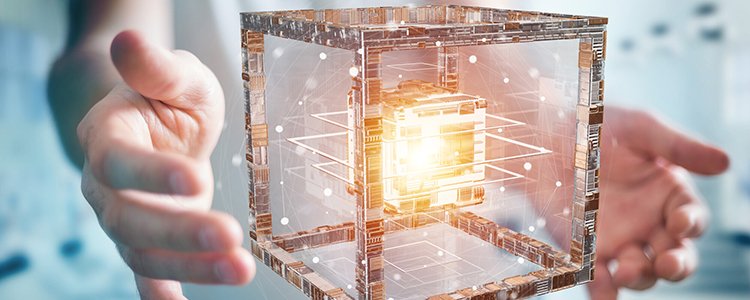Many ERP vendors talk about digital twins in their sales pitches, assuming you know exactly what they’re talking about. Truth be told, they might as well be speaking another language.
We’re here to explain digital twins – and not in the form of a sales pitch. Read on to understand how the technology works and the benefits of digital twin integration.
What is Digital Twin Technology?
A digital twin is a model that virtually represents a tangible or intangible item. This could be a business process, or it could be a physical object, such as a product, a building, or even a city.
Today, organizations are integrating digital twins with a variety of business applications, including:
- Manufacturing execution systems
- ERP software
- ERP supply chain management systems
- Customer relationship management systems
2025 Clash of the Titans
SAP, Oracle, Microsoft, and Infor each have a variety of systems that can support data-driven decision-making. We surveyed customers of these four vendors to find out what their selection and implementation process was like.
Digital Twins vs. Simulations: Key Differences
- Unlike simulations, digital twins are powered by a range of technologies, including 3D simulations, cloud computing, IoT, and more.
- Digital twins are used to facilitate the entire development lifecycle, all the way from initial design to final deployment. On the other hand, simulations are primarily only used for the design phase.
- Simulations can help users predict what might happen in the real world, but digital twins predict this with more accuracy because they know what is happening in the present. They offer much more than a “what-if” scenario and can report on what happens when assets interact with products, people, and processes in real time.
Types of Digital Twins
- Part twins are digital representations of individual components. These twins help companies better understand the characteristics of a part on a physical, electrical, and mechanical level.
- Product twinning allows companies to see how different parts interact with each other (and the environment) in real time. With this knowledge, they can optimize each individual part to improve overall performance.
- System twinning is used for systems that are comprised of various types of products working together in unison. Companies can see how these products work together and unlock new levels of efficiency. Examples include energy systems, communication systems, and traffic control systems.
- Process twinning is the most complex level of digital twinning because it isn’t limited to physical products. Rather, this could mean twinning business processes or even workflows.
Digital Twins in Manufacturing
For years, manufacturers have relied on 3D renderings and computer-assisted design (CAD) drawings to develop prototypes, manage assets, and predict outcomes.
Digital twin platforms improve on these processes, enabling greater accuracy and control. These models rely on IoT integration to transmit data from an object directly to its corresponding twin.
How does it work? First, a physical asset is built. It will contain one or more sensors capable of collecting real-time data and transmitting operational status. This data is then sent over the cloud, where it’s analyzed and replicated in the twin.
In addition to IoT data, digital twins can use ERP data, historical maintain records, and more to enrich a virtual model and unlock a wider range of optimization opportunities.
Benefits of Digital Twins
1. Streamlined Data Exchange
Changes in the physical world, captured by sensors, instantly update the digital twin. Conversely, tweaks in the virtual model can guide adjustments in the physical system, closing the loop for continuous optimization.
For instance, construction companies can improve building quality using digital twin technology combined with predictive analytics to preemptively address structural weaknesses.
(If you’re considering purchasing an ERP system with predictive analytics capabilities, an ERP selection consultant can help you find the right fit for your requirements.)
2. Enhanced Real-Time Insights
Companies across industries can monitor asset performance and identify optimization opportunities in real-time.
Picture a manufacturing plant where real-time data exchange instantly flags a machine nearing failure, prompting predictive maintenance before it breaks down.
Similarly, a company in the agriculture industry could monitor crops with precision using digital twins. These twins would track factors like soil moisture and sunlight to enable targeted irrigation and fertilization.
3. Increased Collaboration and Innovation
Digital twins can become shared spaces for knowledge and decision-making. Engineers, operators, and managers can all access the same synchronized data, fostering collaboration across departments.
For example, architects could use a building’s digital twin in a cross-departmental meeting to visualize the impact of design changes on energy consumption.
Likewise, automotive leaders could use virtual models to advance design and development efforts in areas such as self-driving cars.
4. The Ability to Optimize Processes Across Functional Areas
By simulating scenarios in a virtual model, organizations can test changes, fine-tune operations, and even train personnel before impacting the physical system.
Think of a city using its traffic flow digital twin to simulate various road closures and identify the most efficient alternative before construction begins.
(If you’re considering digital transformation, a comprehensive process improvement initiative is essential. A business process improvement consultant can assist in this regard.)
The Latest in Digital Twin Integration
AI-Powered Twins
Machine learning is taking center stage, making twins smarter and more autonomous. Think self-healing factories and self-optimizing energy grids.
Edge Computing Twins
Processing power is shifting closer to the action, with edge computing bringing twins closer to physical assets. This means faster data processing, real-time insights, and the potential for decentralized networks.
Democratization
Today, businesses of all sizes can leverage the power of digital twins. Affordable cloud platforms are making twins more accessible, while low-code and no-code tools are breaking down skill barriers. In addition, open-source software is empowering more companies to experiment and innovate.
How Might Your Organization Benefit?
With bi-directional data flow between the physical and virtual worlds, the possibilities are endless.
If you’re considering digital twin integration, it’s important to understand the use cases and how it could benefit your business. While it does have plenty of benefits to offer, you must ensure they’re aligned with your organizational goals.
Looking for guidance as you evaluate enterprise software? Contact our experts below for a free ERP consultation.













